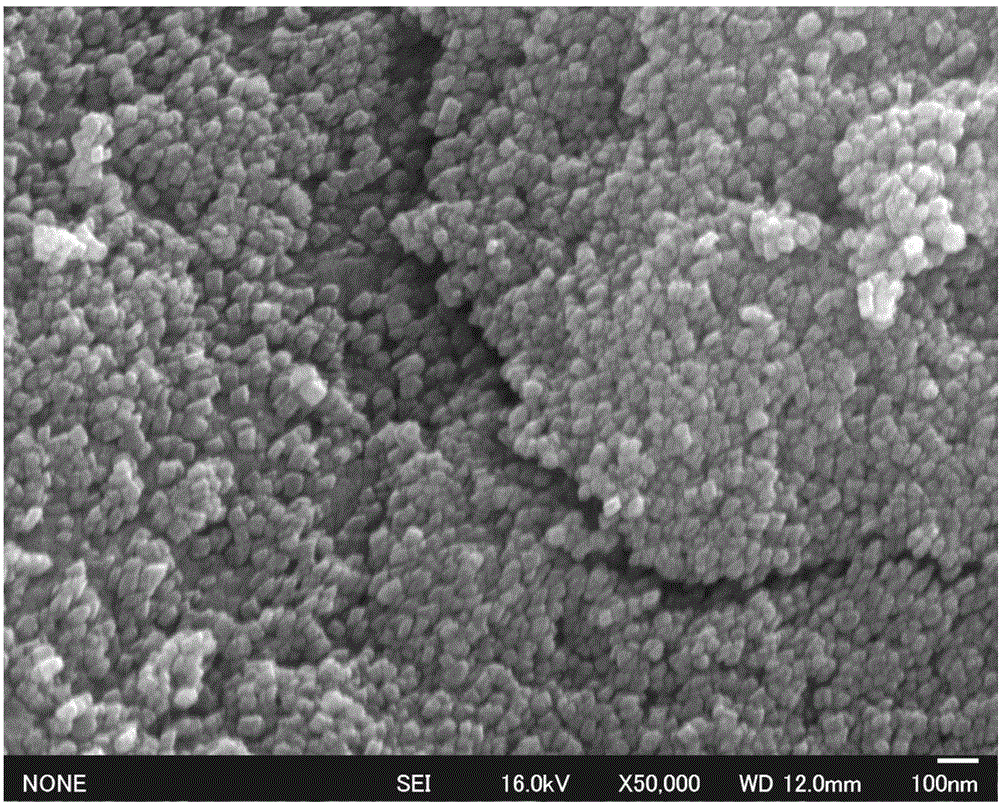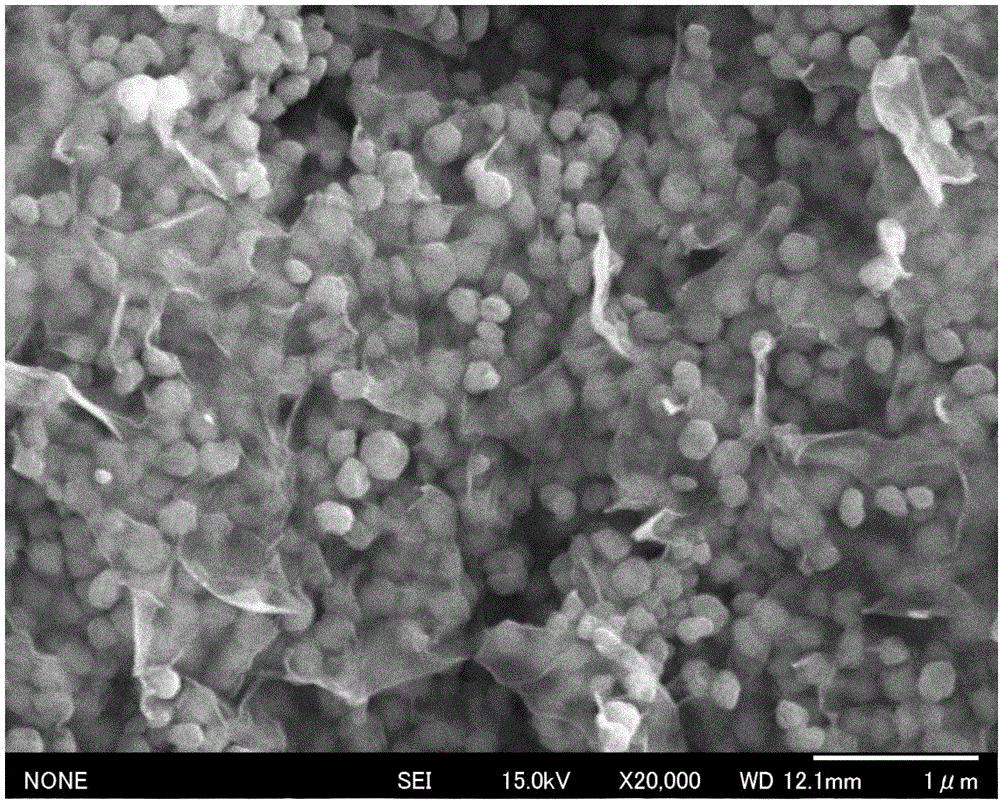Method for preparing graphene-ferric oxide-graphene composite structure battery negative electrode material
A graphene composite and battery negative electrode technology, applied in the field of electrochemistry, can solve problems such as unsuitable for large-scale production, harsh conditions, and expensive equipment, and achieve the effect of improving electrochemical performance, improving conductivity, and simple methods
- Summary
- Abstract
- Description
- Claims
- Application Information
AI Technical Summary
Problems solved by technology
Method used
Image
Examples
Embodiment 1
[0037] 1) Dissolving commercially available graphene oxide in water to form a solution of 1 mg / mL, and ultrasonically ultrasonicating for 1 hour with a power of 300 W by an ultrasonic generator to form a uniformly dispersed suspension of graphene oxide, which is referred to as suspension A;
[0038] 2) Add analytically pure soluble iron salt ammonium ferric oxalate and polyvinylpyrrolidone PVP into deionized water, stir for 10 minutes, fully dissolve the iron salt, and then add it to suspension A to form a mixture of iron salt and graphene oxide Mixed solution B, wherein the concentration of iron salt is 0.05mol / L, the concentration of PVP is 1mg / mL, and the concentration of graphene oxide is 0.5mg / mL;
[0039] 3) Place the mixed solution B prepared above in a water bath, stir and heat to evaporate, the heating temperature is 80°C, the reaction time is 5h, and evaporate until the precursor becomes a paste, denoted as C;
[0040] 4) Put the product C in a muffle furnace, heat a...
Embodiment 2
[0047] 1) Dissolving commercially available graphene oxide in water to form a solution of 5 mg / mL, and ultrasonicating for 3 hours with a power of 300 W by an ultrasonic generator to form a uniformly dispersed suspension of graphene oxide, which is referred to as suspension A;
[0048] 2) Add analytically pure soluble iron salt ammonium ferric citrate and polyvinylpyrrolidone PVP into deionized water, stir for 20 minutes, fully dissolve the iron salt, and then add it to suspension A to form iron salt and graphene oxide The mixed solution B, wherein the concentration of iron salt is 0.5mol / L, the concentration of sucrose is 10mg / mL, and the concentration of graphene oxide is 2.5mg / mL;
[0049] 3) Place the mixed solution B prepared above in a water bath, stir and heat to evaporate, the heating temperature is 98°C, the reaction time is 5h, and evaporate until the precursor is paste-like, denoted as C;
[0050] 4) Put the product C in a muffle furnace, heat at 300°C, and pyrolyze...
Embodiment 3
[0054] 1) Dissolve commercially available graphene oxide in water to form a solution of 2 mg / mL, and use an ultrasonic generator to sonicate for 2 hours at a power of 300 W to form a uniformly dispersed suspension of graphene oxide, which is referred to as suspension A;
[0055] 2) Add the analytically pure soluble iron salt ammonium ferric oxalate and sucrose into deionized water, stir for 10 minutes, fully dissolve the iron salt, and then add it to the suspension A to form a mixed solution B of iron salt and graphene oxide , wherein the concentration of iron salt is 0.1mol / L, the concentration of sucrose is 5mg / mL, and the concentration of graphene oxide is 1mg / mL;
[0056] 3) Place the mixed solution B prepared above in a water bath, stir and heat to evaporate, the heating temperature is 90°C, the reaction time is 8h, and evaporate until the precursor becomes a paste, denoted as C;
[0057] 4) Put the product C in a muffle furnace, heat at 220°C, and pyrolyze for 3 hours to...
PUM
| Property | Measurement | Unit |
|---|---|---|
| size | aaaaa | aaaaa |
Abstract
Description
Claims
Application Information
 Login to View More
Login to View More - R&D
- Intellectual Property
- Life Sciences
- Materials
- Tech Scout
- Unparalleled Data Quality
- Higher Quality Content
- 60% Fewer Hallucinations
Browse by: Latest US Patents, China's latest patents, Technical Efficacy Thesaurus, Application Domain, Technology Topic, Popular Technical Reports.
© 2025 PatSnap. All rights reserved.Legal|Privacy policy|Modern Slavery Act Transparency Statement|Sitemap|About US| Contact US: help@patsnap.com



